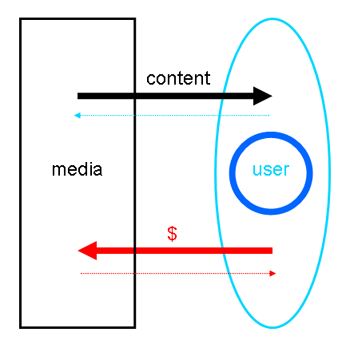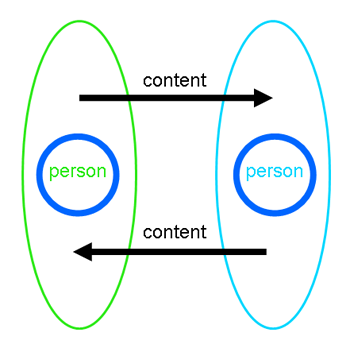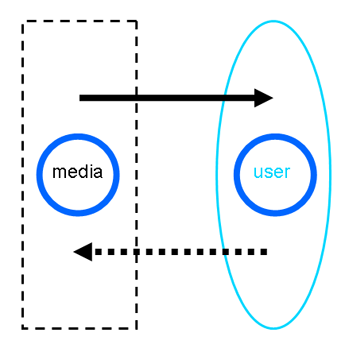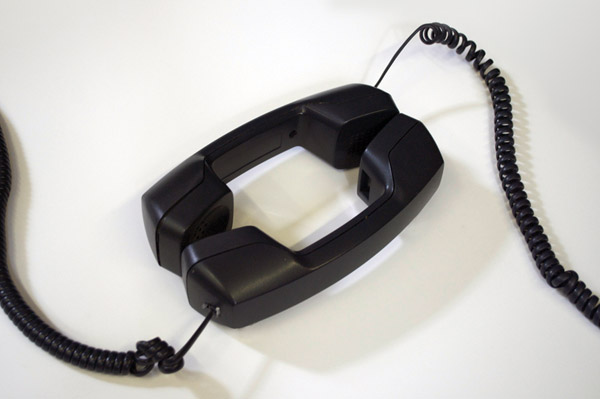10 | Groundwork | Four Observations: Equality
December 29th, 2011 by bruno boutotNote: The five posts entitled “Groundwork” were originally written in 2009. See here. . #
TV is unbalanced – if I own a TV station, and you own a television, I can speak to you, but you can’t speak to me. Phones, by contrast, are balanced; if you buy the means of consumption, you automatically own the means of production. Participation is inherent in the phone, and it’s the same for the computer. Clay Shirky Cognitive Surplus p. 22 #
figure 20: Current exchanges between media and user #
Observations on figure 20 This is a simple but fairly accurate description of exchanges between a traditional mass media and its users: #
- Black arrow right: Most of the content flows from the media to the user.
- Blue arrow left: The user’s mail and comments trickle back to the media.
- Red arrow left: Most of the money exchanged goes from the readers to the media, either directly (paid content, classifieds) or indirectly (advertising).
- Red arrow right: Users can make money via the media when they sell stuff through the classifieds.
- Blue circle: Memory – only the reader remembers what they have bought and read. For the media, the user is only a statistic, not a person with whom to have an exchange.
figure 21: Exchanges in an equal media, like the telephone #
Observations on figure 21 Our goal is to have a stable relationship between users and media. So we have to look into what our users expect when they get involved in exchanges using an equal media. We know of several examples of equal media, where the two parts of an exchange have the same power to send and to receive: the telegraph, the fax, and the telephone. We’ll use the phone as our example, because we are all familiar with relationships that develop over the phone. Here is the million dollar question: What would happen if you had regular phone calls with a person and this person talked all the time, barely listened to you and never remembered who you were? Exactly! That’s the traditional media / user exchange. For two people to have stable and repeated exchanges on the phone, we can roughly expect that ideal conditions would involve: #
- Equal exchange of content
- Equal memory of the exchange
figure 22: Exchanges that occur when Web media and user have equal media capabilities #
Observations on figure 22The user has countless choices: it’s the media that “wants” a long term and stable relationship. If we want the user to “feel” that they have a “good” relationship with the media, it’s up to the media to do its best to “equalize” the exchange. Here we use the phone exchanges as a model. #
What media equality changes? #
Content: Since we have a lot more content to offer than a lone reader does, we have to find any way we can to make the user feel “equal.” We can request users to send as much content as possible to us: #
- Content that contributes to our original content
- Content that users want to share with other users
Identity: There is no other way to equalize the exchanges than to recognize participating users individually and to remember them, their contributions, and their exchanges. #






